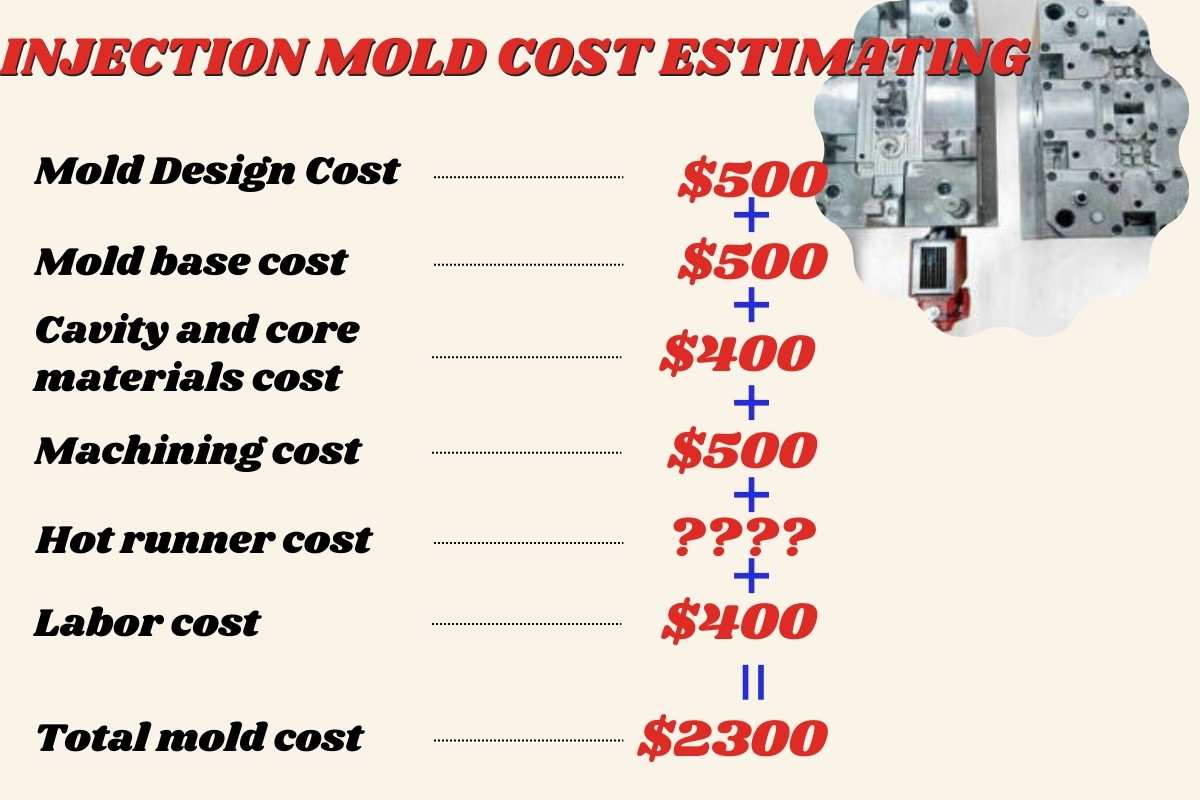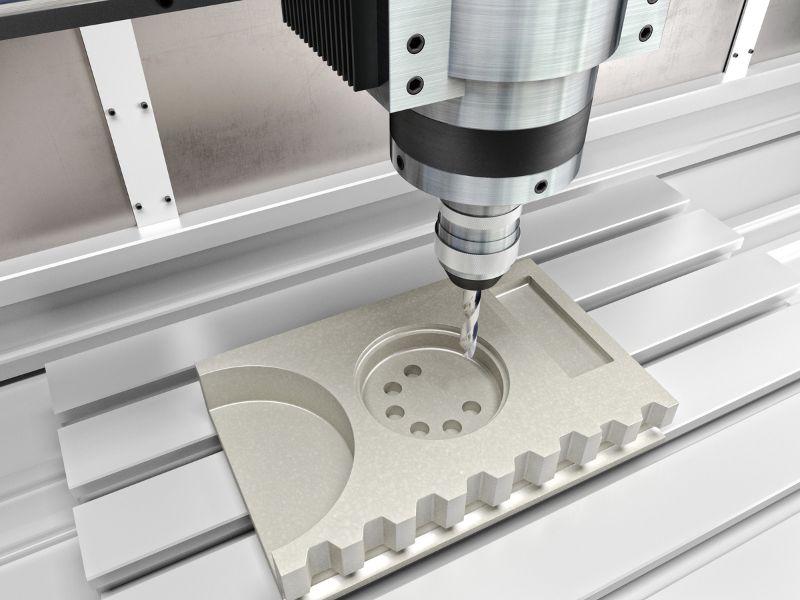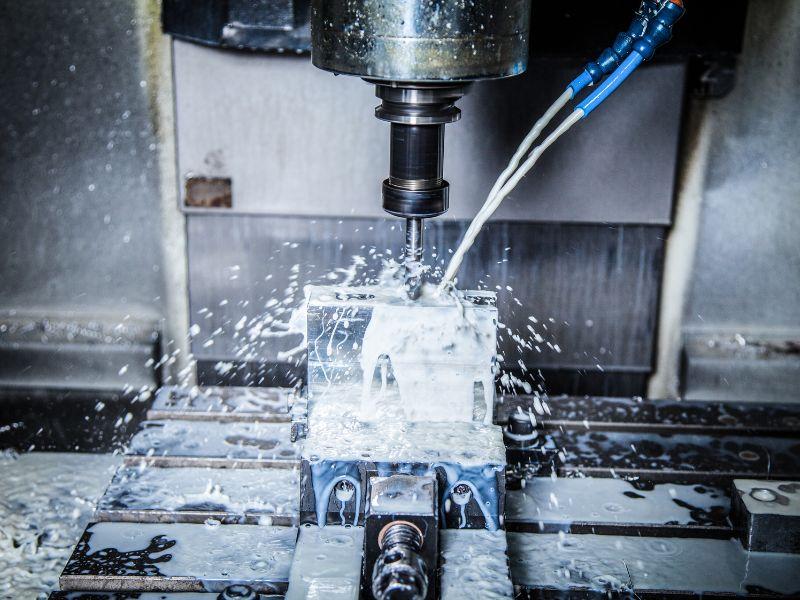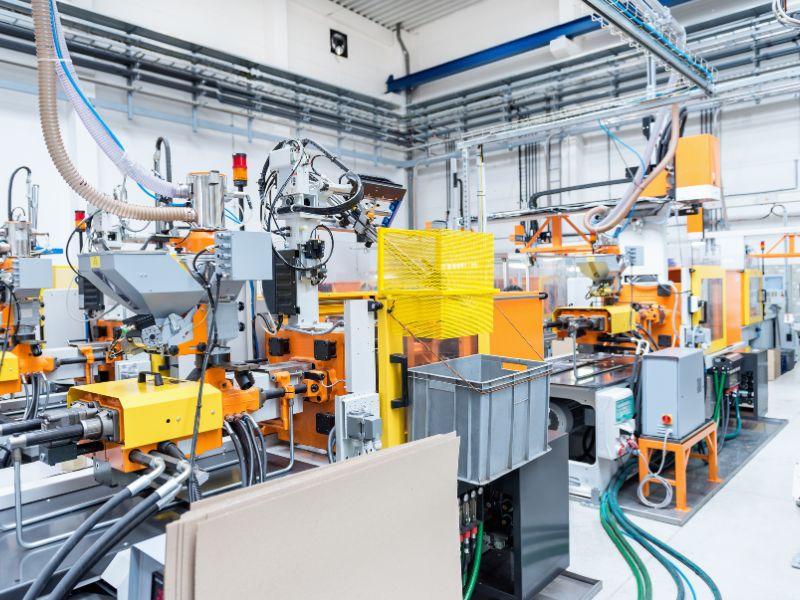how much does an injection mold cost
How Much Does an Injection Mold Cost?
In many industries, injection molding plays a significant role in the manufacturing of various plastic parts. Understanding the cost of injection molds, however, is critical for determining the process’s feasibility. This discussion examines the determinants of injection mold cost, with a particular focus on the impact of production volume and ways to minimize cost.
This blog showcases the key cost drivers that significantly impact the project and answers the frequently asked question, “How much does an injection mold cost?” It also provides tips on how to reduce the cost of injection molds for low, middle, and high volume injection molding. On the other hand, there will be an injection mold cost-estimating example for your reference. Of course, if you have a project that requires an injection mold and molding cost, you are welcome to send us a quote.
If you need to create a plastic part, the injection molding process stands out as one of the most effective technologies, particularly if you require thousands or even more molded parts. However, to utilize this technology, you need to invest in an injection mold, which can be costly. There are many things to consider before deciding whether to invest in an injection mold for your project.
Injection mold costs are not simple to estimate because of the variety of factors that will affect the injection molding tool cost, and there is no standard mold cost estimating method for a single custom plastic part. Mold costs can range from a few hundred dollars to hundreds of thousands of dollars or even more, depending on a variety of factors. Those include the size of the part being molded, how many cavities are being molded at one time, complex of part geometry, quality steel requirement, export (customer will take the mold back to their own place for molding production) or no-export mold (molds will stay at our molding factory for production, we produce the parts for the customer).
Today, we can make the injection mold for you today for as little as $500 if your part has a tiny and simple design. If you have any plastic projects that require molds, please contact us.
Mold lead time is another cost for building molds. The average time for manufacturing a mold is around 5 weeks. Therefore, if you have an urgent case that requires a quick lead time, you should expect an additional mold manufacturing cost that is approximately 1.5 times higher than the quoted mold cost.
Equipment is one of the most important cost drivers in manufacturing mold and is part of the manufacturing expenses. However, since mold manufacturing equipment is considered a fixed cost, those equipment costs are normally ignored when we estimate the injection mold cost. In that case, when we estimate the cost for the new mold, we will check the mold base cost, cavity steel and inserts cost, EDM (electrical discharge machining) cost (including copper material), CNC machining cost, surface polishing or texture cost, labor cost, and the other manufacturing cost.
Electrical discharge machining (EDM) is one of the most important processes to make injection molds. It is used to create injection molding molds that have intricate shapes or deep ribs. EDM uses high-energy electric discharges to heat the metal workpiece and then sinter it to the mold shape required. EDM is restricted to metal molds and might not be very effective for all types of molds, even though it is very accurate.
CNC machining is another mostly important mold manufacturing process that is used in the manufacturing of injection molds, particularly those used to manufacture the cavities and cores. There are many types of CNC machines, and each type of CNC machine will have a different cost. When you use high-cost CNC machines to manufacture the injectino mold, this will increase the injection mold cost. For some high precision and small tolerance requirements, molds will require high-precision CNC machines to manufacture.
Over the last few years, 3D printing has been considered a cheap and fast way of creating molds, especially for plastic injection molding. 3D printing also known as additive manufacturing is a process of creating molds through the deposition of layers from a digital model. This method is less sensitive to the skills of the operator than other traditional machining techniques, thus lowering the possibility of high labor expenses. However, there are a few limitations that need to be taken into account, for example, the size of the build platform and shrinkage of the printed molds.
To obtain the desired level of quality of the mold and the price, it is necessary to make a comparison. Both the traditional mold manufacturing process and the 3D printing process have their strengths and weaknesses.

Injection mold cost estimation
Although there is no standard method for estimating mold costs, each individual project can use some mean factors to determine the cost of a plastic injection mold. In the following section, we will discuss these average costs.
Mold base cost: A mold base is one of the major costs in manufacturing an injection mold. A mold base functions as a pocket and mold frame, supporting the mold cavities and cores, as well as the ejection and feed systems (cold runner or hot runner). Support pillars and cooling systems. The cost of the mold base is a function of the mass of the mold and the cost of the steel per unit mass.
For example, if the mold weight is 500 kg and the unit steel cost is $3/kg, then the mold base cost will be 500*3=$1500; this $1500 is the mold base cost without any manufacturing.
Cost of mold cavity and core inserts: Typically, the cost of the cavity and core inserts accounts for the largest portion of the total injection mold cost, as these features play a crucial role in shaping the desired product geometry. We split this cost into two parts: the material cost for the cavity and core inserts, and the machining cost.
- Material cost: The cost of the cavity and core insert materials is the simplest term to evaluate as the product of the volume of the cavities and cores. A simple way to check the cavity material cost is based on the weight of the insert material and the cost of the insert material per kilogram.Different types of steel have varying costs per kilogram. Pre-hardened materials, such as P20 or 1.2738H, are typically less expensive than hardened mold materials, such as H13 or DIN 1.2343. Additionally, different brands of mold steel will have varying prices, such as the difference between LKM and ASSAB.For example, if the DIN 1.2344 grade of insert material from LKM is $7 per kilogram and the total weight of cavity and core inserts is 100 kilograms, then the total cavity and core insert cost will be: 7*100=$700. The insert material costs $700. The insert material’s weight varies depending on the size and geometry of the part; larger parts will require heavier cavity materials.
- Machining Cost: Costs for cavity and core inserts include various manufacturing processes such as CNC machining, EDM, wire EDM, drilling, heat treatment (hardening steel), lather machining, and surface finish, among others. While determining these costs can be challenging, we typically estimate them in terms of hours. For example, if the CNC cost will be $20 per hour and you will need 10 hours to finish the CNC machining for this cavity insert, then the CNC machining cost will be $20*10=$200.
The other CNC machining costs will remain the same, with the only difference being the unit machining cost for each manufacturing process. We will add these costs together to determine the total machining cost for the insert. - Labor cost and mold quality requirements: The location of injection mold manufacturing determines the cost of labor and the tolerance requirements. The cost of mold manufacturing will increase if you manufacture your mold in America, Europe, Asia, or Japan due to the higher labor costs in those regions. However, making your mold in China will be much cheaper than in Europe or America.Furthermore, the mold tolerance requirement will impact labor costs. To ensure the quality of a high-precision and tight-tolerance injection mold, a high-precision machine and a high-technology moldmaster are required. This will require additional adjustments to meet the tight tolerance, as well as additional manufacturing procedures to ensure the mold is of high quality.For example, a mold manufacturer using a five-axis CNC machine will tend to have a higher cost than a mold maker using a manually operated three-axis CNC machine.
Below table is completely injection mold cost for some normal part design, cost is bases on the size of mold base.
| Sample of Mold size(L*W*H) with with normal part geomietry(mm) | Mold Design Cost | Mold Base Cost | Cavity and Core Matreial Cost | Machining costs for cavities and cores | Labor Cost | Hot runner Cost | Total Mold Cost | Remarks |
| 150*200*250 | US$200.00 | US$200.00 | US$180.00 | US$400.00 | US$400.00 | US$0.00 | US$1,380.00 | No hot runner |
| 300*300*300 | US$200.00 | US$350.00 | US$250.00 | US$500.00 | US$500.00 | US$0.00 | US$1,800.00 | No hot runner |
| 400*400*400 | US$200.00 | US$900.00 | US$600.00 | US$1,200.00 | US$1,000.00 | US$500.00 | US$4,400.00 | One hot drop |
| 400*500*400 | US$200.00 | US$1,050.00 | US$700.00 | US$1,300.00 | US$1,100.00 | US$0.00 | US$4,350.00 | No hot runner |
Tips to Reduce Injection Mold Expenses:
As such, reducing the cost of injection mold is necessary to improve production efficiency and make the best use of the resources at hand. Below, we will discuss some common techniques to reduce plastic injection mold costs.
- DFM analysis: According to the DFM report, Design for Manufacturing (DFM) analysis entails using reasonable technology and strategies to reduce the cost of injection molds. During the design phase, this process employs DFM analysis to scrutinize functional components that fit within the allocated budget.
- Simplify Design Features: To save money on injection mold and injection molding, simplify designs and eliminate all superfluous components. Focus more on functional features than aesthetics; for example, decrease the number of useless ribs or rib depth.
- Take into account Universal Molds: Standard molds are less expensive ways to produce high-quality and high-volume molding parts. Hence, they are preferable when custom molds are not necessary. CAD models help mold design before manufacture, making it more affordable.
- Select Economical Materials: Choosing the appropriate material, such as ABS or polypropylene, can significantly reduce injection molding and plastic injection mold costs without sacrificing quality. Pre-hardened steel can still serve as the mold material for this type of material, enabling the production of millions of pieces. It’s important to use high-quality materials and keep solutions affordable.
- Using insert molding: For long-term savings, we recommend looking into insert molding and overmolding methods. For instance, insert molding saves money by eliminating the need for plastic threading for metal components.
- Reduce Mold Cavities: To save plastic injection mold cost, reducing the amount of cavities in molds will be one of the better options; in case the number of parts is not so high, then using a single injection mold with pre-hardened steel will reduce the mold cost.
- Use family mold: If you have three or four plastic parts in one project, designing all of the family parts in one mold will reduce the injection mold cost; this is the most common option we use for our customers.
If we successfully implement these strategies and significantly reduce the costs of injection molding procedures, we can make the manufacturing line more efficient overall.

Molding Machines Used For Injection Mold
When you invest in injection molds and agree with the injection mold tooling costs, then you will surely want to know the injection molding cost for your project. Proceeding to the equipment used in injection molding is an essential aspect of the cost consideration. There is a wide range of classifications of injection molding machines depending on size, automation, and price. Let’s look at the costs associated with these machine categories:
Electric injection molding machines:
These devices use an electro-servo motor, which is less expensive, more accurate, and energy-efficient. However, they require a lot of capital investment and maintenance as compared to other varieties of injection molding machines.
Hybrid injection molding machines:
Hybrid machines are a combination of electric and hydraulic components, utilizing servo motors and hydraulic pumps. They cost a little more and require more maintenance in the initial phase, but they have high accuracy, stability, and energy conservation features.
Hydraulic injection molding machines:
The hydraulic pump is the main part of hydraulic equipment, which is characterized by high reliability, stability of the rate of ejection and injection, and relatively low initial investments. But they are typically more power-consuming and may not be as accurate as electrical gadgets.
Many organizations outsource injection molding services to service providers because the machinery used in injection molding is capital-intensive and requires frequent maintenance. This method is a cost-cutting measure for organizations that want to cut down their costs since they do not have to purchase or maintain machines.
Commonly used resins like PC, ABS, PU, PP, and PE directly affect cost and typically range from $1 to $5 per kilogram. However, the price of the material depends on the product’s design and use during the molding process.
The cost of injection molding is briefly discussed above. If you are interested in learning more about the cost of plastic injection molding, please visit the How Much Does Injection Molding Cost page.
Factors Contribute To Expense of Injection Mold Cost
There are many factors that will affect the injection molding mold cost; below we will list some basic factors that will affect the injection mold cost.
- Part Complexity: Molds requiring complex shapes necessitate additional CNC machining, working time, EDM manufacturing, and other related machining. These complex design molds will be costly because they can use more material, have higher machining costs, and take longer to produce.
- Part Size: The cost of injection mold material varies depending on the size of the mold. Larger and more complicated designs require a big mold base and big cavities; in that case, a big part size will take more mold steel and more time to produce than small and simpler ones.
- Undercuts: Undercuts can be a problem in mold manufacturing and part injection. We recommend avoiding undercuts or incorporating portable cutoffs during injection mold making to minimize plastic injection mold costs.
- Appearances and Finishing: The incorporation of factors that are not necessarily required in the product may raise the cost of the injection mold. The use of texture, bead blasting, or high-polishing molds, which should be used sparingly, also increases the cost and complexity of the molds.
- Type of injection mold: There are two types of injection molds if you consider the cost of plastic injection molding for the same plastic part: hot runner mold and cold runner mold. Accordingly, hot runner mold will be more expensive than cold runner mold.

Injection molding expenses also include labor and extra services.
Let’s briefly talk about how labor expenses impact the overall costs of the injection molding project.
Installation Costs: All the stages of the injection molding process are associated with machine settings, which are particularly critical during the technically challenging mold making.
Repair Costs: Just like any other machinery, the injection molding equipment needs maintenance and replacement, which adds to the business’s operating costs.
Costs of the Operator: For optimal project performance, operators contribute to the labor costs, which are one of the expense groups.
Example of Cost Depending Upon Production Volumes
The number of units required for production determines the cost of injection molding. We divide manufacturing volumes into different classes, each with a unique cost based on the number of parts required; these classes may also have associated injection mold costs to reduce the overall cost.
Injection mold cost for low volume injection molding:
It is feasible to produce components in batches of one hundred to two thousand. Aluminum injection molds, also known as prototype molds, serve as cheaper and faster molds for low-volume manufacturing. For example, making 1000 to 10,000 pieces could cost $500 to $1,000 for the mold and $0.5 for each portion of raw material. Off course this is an example for normal plastic material; if there are glass-filled materials, then the mold life time can be reduced to 50%.
It is thus important to know the details of injection molding cost, molding material, the types of equipment, and how the volume of production affects the cost in order to get the best results.
Mold Cost for Mid Volume Injection Molding:
Usually, mid-volume production runs from ten thousand to five hundred thousand components. The strength and low cost of pre-hardened steels like 1.2738, P20, 718, and 738 make them popular among injection mold manufacturers. If the raw material contains glass or other hardened materials such as PEEK, PPS, etc., the mold lifetime will decrease correspondingly.
Take, for example, a 10,000–500,000-part production run with the following rough breakdown cost:
The injection mold cost is $2,500–$5,000; the final plastic injection mold cost depends on the part design and size.
Molded Part Cost of Raw Materials: $0.5
Labor Cost per Part: An approximation is $0.3
Computed Total Cost per Part: $0.8
Injection mold cost for high-volume injection molding:
Many items are made with high-volume injection molding, which might include from one hundred thousand to millions of components. In that case, the injection mold steel should be very strong and long-lasting, and the mold base should also be of high quality. Normally, for this type of injection mold, we suggest using hardened steel with HRC 48-52°C, such as H13, DIN1.2343, DIN1.2344, S136, and 8407 for the cavities and inserts, and use 1.2311 for A and B plates.
Producing large volumes of work necessitates sophisticated equipment, which raises production costs. Nevertheless, economies of scale cause the cost per part to be far lower in high-volume production and substantially higher in low-volume manufacture.
For example, consider a 500,000–10,00,000-part production run with the following estimated cost breakdown:
The cost of an injection mold ranges from $6000 to $35,000, depending on the size of the part and the number of cavities. You can send us your part design for a quote.
Raw Material Cost Per Part: $0.5
Labor for each part: $0.1
Computed Total Cost per Part: Roughly speaking, $0.6
The economies of size in the injection molding costs per part are the source of the major cost benefits in mass production.

Sincere Tech is a Quickly Expanding, Effective Tooling Solutions Provider.
Low- to large-volume production needs are the main emphasis of Sincere Tech. Sincere Tech has a variety of specialties, including injection-molded components, machining services, and custom mold design.
Sincere Tech offers low pricing, free DFM checks by qualified engineers, just-in-time manufacturing services, and enormous resources. To obtain the best injection molding solutions at a very affordable price, simply upload your CAD design file.
Many sectors extensively utilize the injection molding manufacturing process, so understanding the expenses and their estimation is crucial. This article covers the cost factors of injection molding and methods to reduce manufacturing costs with the assistance of a knowledgeable tooling partner like Sincere Tech. If you want to learn more about ”how much does injection molding cost”, contact us right now and get expert advice tailored to your needs.
General Questions:
Q1. Is injection molding expensive?
The complexity and volume of production determine how much injection molding will cost. Despite its high cost, injection molding proves to be quite economical when large quantities of parts with precise dimensional accuracy are required.
Q2. In what range does a plastic injection mold cost?
Injection mold prices range from $300 to $100,000, depending on the type of material, level of mold complexity, production volume, and part design.
Q3: How long to make an injection mold?
This also depends on the part size and design, but the first sample will take around 4-5 weeks.
Q4: Is injection molding practical with materials other than plastic?
In fact, because it works with both metals and rubbers, injection molding is a versatile process that finds use in a variety of industries.
Q5: How can I calculate the cost of an injection mold and injection molding?
It is very easy to get those costs for your project; you can send us your 3D drawing (stp or IGS format file), requirements for quality parts, and plastic materials, and then we could send you the price in 24 hours.





